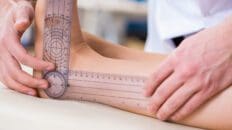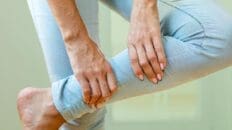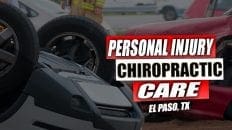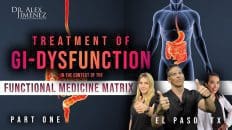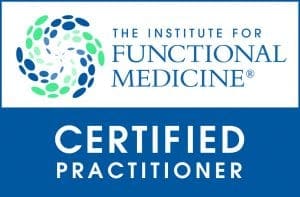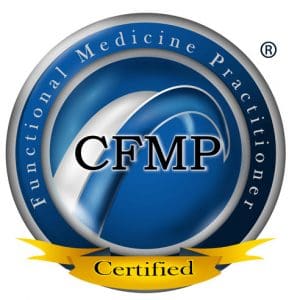Table of Contents
Introduction
In today’s podcast, Dr. Alex Jimenez talks with Juan Corona and Valeria Altamirano about their product, The Leg Length Regulator, and how their device can help individuals with leg length discrepancies as well as improve their overall wellness.
The Leg Length Regulator
[00:00:02] Dr. Alex Jimenez DC*: Today, we’re going to be presenting an impressive young group of individuals where we’re going to be discussing really what’s unique in El Paso. We got a lot of talent here in this town, and one of the things that we’re going to be talking about is actual professionalism, and science is what college engineering does. Dr. Natalicio is an amazing dynamic principal who’s left a legacy of engineering in the school of UTEP. And one of the things that we have is we have an amazing desire for our youth to want to stay. Now I’ve been here for 30 years, and I’ve been practicing for quite a bit a long time. And what I’ve noticed is that when I first came to El Paso in 1991, many young individuals wanted to leave. It was a very common desire that you wanted to leave if you lived out here. You wanted to go to Washington state, Washington, Harvard, but you didn’t want to return. Today we have a school that is recognized worldwide, and the science department is one of the most amazing departments and well-respected. And it’s always in the top 10 with MIT and schools that are very high in engineering value. So I’ve met many of the students out here over the years, specifically engineering students, and the amazing minds they have and how intelligent they are doesn’t stop the baffle me. It makes me very proud to present certain talents as an individual, parent, and community individual. And today, we’re going to be presenting a group of individuals that have begun a new process, a new endeavor in their lives, and a new beginning. This beginning is one that that is full of mystery, wonder, and amazing science endeavors. So one of the things is that the program that we’re going to discuss will focus on leg length regulations or what they call the leg length regulator. That’s the idea of one Dr. Thomas Sarkodie, who is their teacher, is one of the lead individuals and the one that is is spearheading this program. And now I have to add the privilege of having these two young individuals. I have Juan Corona and Valeria Altamirano. So today I want to do is I want to talk to you guys about these two individuals and specifically about the leg length regulator. This leg length regulator is a new dynamic that is their baby. These guys are master’s students. That means they’ve gone through a long-level education and are in pre Ph.D. programs, which, if they choose to, can become the future in this new design. So I want to present you guys, I’m going to talk first with Mrs. Valeria, and she’s going to go ahead and tell me a bit about this program, as she’s one of the leads and the second chair is Juan. I want to discuss these things and why Genesis is this new product. Genesis, or begun here in El Paso, is about, so Valeria talk to me. Hello. How are you doing?
[00:03:14] Valeria Altamirano: I am doing good. Thank you for having me here.
[00:03:17] Dr. Alex Jimenez DC*: So you guys have started a new product, and is this leg length regulator? Tell me a bit about it because I think El Paso wants to know what we’re doing in the engineering department. What is it?
[00:03:26] Valeria Altamirano: So the likely regulator is a new device that we’re trying to develop, and it’s to focus on patients with leg length discrepancy. And what that is is when your lower limbs are of unequal size. So many people don’t know that they have this kind of illness until they notice that they have a lot of back pain. It’s hard for them to stand right. It’s hard for them to walk, and they just experience a lot of uneasiness when they’re doing things. So for a class project, we were assigned to do research and make a device of our choosing. And Dr. Sarkodie had mentioned if we wanted to look into leg length discrepancy. So I looked into it, and I noticed that many people are affected, especially children and elderly patients. So we went ahead and decided, OK, let’s build something for it, for this cause. And that’s how it came to be the leg length regulator. So what it does is we’re trying to use an LVDT, which is a linear variable differential transformer, and it uses that along with a PD controller and programed into an Arduino. And it’ll help regulate the amount of pressure put on to the foot to help lift it back up to where it is supposed to be so that the patient doesn’t feel pain. The main goal here is to eliminate pain so that children and adults can go on with their everyday lives without having this issue.
[00:05:06] Dr. Alex Jimenez DC*: This is very much amazing. I want to ask Juan in a second here specifically about the idea and how he’s also perceived the beginning of this idea. But as a practicing physician over the last 30 years, I can assure you that leg length discrepancy is a huge problem. It throws and alters the body mechanics. And one of the things that I can assure you is that when I evaluate each one of my patients, I measure for leg length discrepancy, whether it’s just a qualitative look or even a quantitative approach through X-rays or different linear methods by measuring femur, hips and knees tibia and all the good knots. But we can figure these things out and look at the effects. And I will tell you that having altered foot mechanics throws off the human locomotion, the ambulation of the foot. So I’d like to know a bit about Juan. Juan, tell me about yourself. And your last name is Corona, right, and you’re an El Pasoan, tell me a bit about the story behind you and this project.
[00:06:12] Juan Corona: So I have an undergrad in mechanical engineering, so I’ve always been interested in the biomechanics field. I volunteered in some life before, and I approached Dr. Sarkodie to be my project’s thesis advisor. And as Valeria mentioned, we were in one class where we were asked to find one kind of problem and come up with a solution. In our case, there was this lengthening regulator. That was the class. Then we had another class, which was it. It was more like a workshop. It’s got I corps and, what they do, they tell and teach you how to sell your product and to see if it’s needed for a different kind of operation. So what we want to do is come up with a device that regulates the different lengths and your legs to help people reduce their pain and their back pain, any pain, and all these various biomechanical issues that come with having this discrepancy.
Relieving Biomechanical Discrepancies
[00:07:24] Dr. Alex Jimenez DC*: You know, one of the things when you said biomechanical discrepancies, I have to think back to the years when smoking was real bad. It’s been one of the killers of the Americas and the people in the families through the 1900s. One of the things is the surgeon general really fought hard, and the system fought hard to put these little emblems on smoking packages, which was smoking is hazardous for your health, right? And everyone knew it was common sense, but they took years to produce this one sentence. Later on, they went off, and they put another sentence in there that says it could also be harmful to pregnant individuals, right? So this took a long time. It’s sad to believe that it took it to the 80s to put that statement on. One of the things that I noticed is that the surgeon general has recently, and we’re talking about in the last decade, has determined that arthritis is a disorder of biomechanical imbalance. Right. So now we know that biomechanical imbalance is one of the major causes of arthritis. When the body’s out of calibration, the body forms a level of imbalance, and the body responds to it. Just like when you work out when you put everyone who knows who works out, who works with hands, they eventually get calluses on their hands and fingers. This is a normal process. Well, that’s because the body is under stress. The tissues in stress, the body responds. Well, guess what happens when the body’s at a mechanic’s? Well, the bones in a process that is delineated by wolves law, which is a process of which accelerated mobilization of the osteoblasts, which are they work together with the osteoclast and osteoblasts. You ultimately form arthritis in the direction where the load is imbalanced and placed. This is the way the body protects you. So one of the things, if your body’s out of whack or your foot is not put in the correct position, you will cause early degenerative changes not only in your foot, ankle, hip, knee, and pretty much the spine in different areas. Right? One of the things that people don’t know is that when we have, let’s say, a person who’s got arthritis in their back and they’ve got a bad hip. Where do you begin? Which one do you fix first? And the most astute surgeons will realize that you’ve got a fix the hip first because how can you fix a spine with the base all misaligned, right? It’s almost like you’re building a house on an uneven floor. So you got to fix the pelvis in this situation; we’re fixing it from the ground up. Once we fix the issue from the ground up, we can place the body’s in the proper mechanics and then deal with the back. It is tough to fix a minor back problem with the body with an offset base. So let me ask you this in terms of this new product because I’m excited about this product for you guys as I’m a stand buyer and this is mumbo jumbo to me, engineering process and all these lineages and vectors that they kind of develop in the magneto stuff that they do. I want them to tell us a bit of what was their beginning, how did they do their research? How did you guys do your research? You guys can answer this. How did you research terms of beginning the process?
[00:10:36] Juan Corona: OK. For us, Dr. Sarkodie mentioned this problem, and he said it was present in some people. So for us to double-check that, we had to carry out some different kinds of interviews with people had; we interviewed other clinicians and patients who have this condition in order for us to see if it was actually something that was pressing, intimate among the people here in the past. And it’s pretty common. Very common. Yeah. So we started doing more research, and then we started some reading, some peer-reviewed articles, you know, to see what are the main effects.
[00:11:17] Dr. Alex Jimenez DC*: If I may, what kind of research did you look into? Where did you go looking for the research?
[00:11:25] Juan Corona: We read articles from academia, mainly academia. So from different people who had more knowledge in this topic, we focused on trying to come up with the solution, and that was how we came up with this device.
[00:11:43] Dr. Alex Jimenez DC*: Did you guys do any anatomical studies? Did you guys look at the anatomy of the foot? How did you guys come up with this particular design?
[00:11:51] Juan Corona: The main problem was the long length discrepancy was what we thought and when we come up with to even out the two legs, you know? You mentioned that this is a problem that comes from down to up. And then that was our first option to fix so we could get rid of all the different effects it has.
[00:12:18] Dr. Alex Jimenez DC*: In terms of things you found Valeria, what kind of things do you look into in your approach where you also look at academia?
[00:12:26] Valeria Altamirano: Yes, so I read different articles that described what it is like leg length discrepancy and how it affects patients and the struggle they have to go through to get it fixed. And then, since we were part of the I corps program, we had to go out and interview different patients. So what I did was I use social media to the best of its ability, and I found a group that is strictly dedicated to patients that have leg length discrepancies.
[00:12:58] Dr. Alex Jimenez DC*: Get out of here. Really?
[00:12:58] Valeria Altamirano: Yeah, it has like 500 people in it, and everyone that’s in that group has been affected either by a family member, or they personally have been affected by it. And so I messaged the group admin, and I said, Hey, I’m doing research. Can I join your group? I don’t have any relation to leg length discrepancy, but I’m trying to build a product to help patients that need it. And she got back to me, and she told me, Yeah, definitely go ahead. Like, I’ll post it and see if people are interested. And so, yeah, I was able to get in, and I got interviews. And that’s kind of how I saw that many patients are affected by it. And I didn’t know what extreme until they told me their stories that they had to preorder their shoes. They have to send their shoes to a company to get them back. One little girl said to me that she only has one pair of shoes because it’s the only one that works. So she’s sad because she can’t be that little 12-year-old girl that wants to wear every single shoe out there.
[00:14:06] Dr. Alex Jimenez DC*: Yes. Is that true? I have women here watching and in the background. Is it true? They all say Yes, it’s very true. OK, you know what? Let me ask you a particular question because now we’re entering the human component of leg length discrepancy. I don’t think anyone’s written a story about the humanity of it, or at least I don’t see them as much. But there is the humanity of empathy; what did you sense as you heard these stories from these individuals?
The Issue Of Finding The Right Pair Of Shoes
[00:14:33] Valeria Altamirano: I was shocked because I didn’t know how bad it was for a person to go through this because I mean, my legs are even. I would hope that they are. And it never occurred to me like, oh, I have to buy a different shoe because I need a wider heel to even out my body. And some patients told me that they are active. But it’s hard because when they want to work out, it causes more pain because of the back problem. And then they have to go to rehab, and then they want the hip surgery to fix everything. But then it happened again, and then some patients told me that they didn’t have the funds to afford a hip surgery. And to go through all that struggle of finding something that makes them feel good about themselves and not stand out. But at the same time, make it work because that was one issue that I noticed many people do not like the extra heel insert because it’s so bulky and so big and so noticeable. And people, people will stare and be like, Why do you have a different shoe size? Like, it looks weird, so it makes them feel uncomfortable, and they don’t want to go out because of this. And so they stick with regular shoes because they don’t want to be standing out and have people pointing like, Hey, you have a problem. And they rather take the pain than fix it. So that hurt me a lot, knowing that there’s not something that can help them improve and live their lives daily without having this in the back of their mind.
[00:16:14] Dr. Alex Jimenez DC*: Valeria, one of the things that you mentioned is, and I don’t know if you guys are old enough to have. Well, probably not. But you know, many people, I started realizing that the word why we became the most important word, probably about a good decade ago, you guys were in middle school, the why that you have to do this project, which means a lot to me. Is that your compassion to it? Did it hurt you? What else did you feel? And I’m going to ask Juan how he felt after doing his research. What did you feel when you researched the individuals and their plight to feel good? Valeria, go ahead.
[00:16:55] Valeria Altamirano: Well, for me. What made me want to keep going was asking them questions like, I ask them, What do you want, what is out in the market that you would buy? And they told me what it was. So with the information that they gave me. I started looking into different things like redesigning our initial design to fit their criteria to help them and asking them questions about telemedicine, like if a component was available. Would you prefer that? And would you like to reduce the amount of times you visit the doctors? And I was trying to get what they wanted so I could figure out how to put everything they’re looking for into one design.
[00:17:39] Dr. Alex Jimenez DC*: That’s amazing. Juan, what was the why that’s driving you in this project? Because you got it. You know, one of the things is that engineering is one thing, right? And that’s the math. It’s the lines that the physics or the cool stuff that is, you know, the Oppenheimer stuff, then for me, when we get to the humanity of it, how do you feel this project has empowered you?
[00:18:02] Juan Corona: Personally, I really like running. I’m a runner. I recently ran my first marathon in the fifth year. Did you win? I was in third place in my category.
[00:18:19] Dr. Alex Jimenez DC*: So you’re good. OK, so all right. Great, continue.
[00:18:22] Juan Corona: So I like running, and of course, I’ve had some knee pain or back pain or my foot hurts. Sometimes after finding the depends on how many rebounds and everything, how often. And then it’s I think it’s pretty easy for a person not to relate it. For example, when people see that they have their two legs with differing lengths, you might not think how much it affects them and how much it impacts through life and not really like in a more personalized way. Like, for example, someone in sports. If they walk, how much do they walk cause in order for them to get a different attitude that it’s able to to help them reduce all this pain? So I think all these personal issues, when it translates to their experience, I think that’s what impacted me the most because you might not know how much this condition is affecting your life until you ask them. They tell you so many people who have this type of condition are preventing some activity they might like. In my case, it will be maybe running, and I don’t know what I would do if I were not able to run, you know, because there’s a difference between not doing something because you don’t want to then be in something, not doing something, because you can’t.
[00:19:38] Dr. Alex Jimenez DC*: That’s a big difference.
[00:19:40] Juan Corona: Yeah. So like that, you get taken away from that choice. I think that that’s something that impacted me. So that’s why we want to keep working, improve it, and make it accessible because there are solutions right now. Still, they might not be as accessible and affordable for different people.
[00:19:59] Dr. Alex Jimenez DC*: I’d like for you to know that there are tens of millions. I’d even say, you know, at least one in every. There are five trillion people, about five billion people in the world, right? And so there is at least one out every five has an ankle-foot problem. So there are billions of people out there who can be affected by shoe dynamics. If you know, if you’re a long-distance runner and when you start, your body is at a certain state. But as you run for hours and hours, any imbalance creates a more significant imbalance. Later on, your body starts talking to you. Now your body doesn’t say, Hey, knucklehead your foot off, but it starts feeling things OK, like achy and swelling in the knees. You work through it because you’re a champion, but wouldn’t it be cool to be able to have a dynamic change or a structure that helps you out now? Many people don’t just think about foot insoles or foot supports. This is a unique difference between a foot insole. Tell me a bit about all of you can answer this, but let me ask both of you the same question. What is the difference between this and a regular, let’s say, wedge? What is the difference between this dynamic structure, this leg length regulator? It already sounds like it has changed. So the word is cool versus a wedge.
The Product VS Wedges
[00:21:21] Valeria Altamirano: Well, I wear wedges as heels, so yeah.
[00:21:29] Dr. Alex Jimenez DC*: It’s important, huh?
[00:21:30] Valeria Altamirano: Yes, it is. I got to go to my summer game and everything anyway. So when I wear like my wedges, it’s very rough and hard, and it’s meant to keep me stable. But when I take them off, I mean, I feel the strain in my legs. And so having to wear that constantly, I wouldn’t want to walk because it’s a lot. It’s like you’re doing a workout 24-7 if you’re wearing wedges. So for patients who have to wear these kinds of shoes with that extra insert or that extra attachment to the sole, it’s a lot of work because you have to prepare yourself mentally. Hey, if you’re going to do something, you’ve got to deal with the pain and get through it. And the difference with our design is that we’re looking at it as an insert. It will be softer, and you won’t feel it as much, and it won’t be as noticeable to other people. And they won’t have to question, Hey, what’s wrong with you? It’s more of, I know what’s wrong with me, I’m fixing it, and you don’t have to worry about it.
[00:22:34] Dr. Alex Jimenez DC*: It makes perfect sense. And for you, Juan, what is your side telling me your points?
[00:22:39] Juan Corona: I think that making it different, as Valeria mentioned, would replace an insert for us. One of the main concerns in kids that we got from the interview we carried out was the day it’s noticeable, and people can tell when they’re wearing these modified shoes. So for us, it would make them feel less noticeable and like they could have more like a normal life.
[00:23:12] Dr. Alex Jimenez DC*: I’d say that’s true because I think when you’re a little kid, you don’t want to be noticeable, you don’t want to stand out. And if you have a shoe that looks different or a gait that looks different. You know, I got to say it, kids are, and I was one. And they’re not sometimes very nice. They say things, and it hurts people’s feelings, and though to them, it’s in the transient, but some words can be used that can hurt a person, and that’s at the basis of what we’re doing. That’s the real genesis of why we’re doing this thing not only for biomechanics but also for a self-esteem issue. You know, that’s a big thing. So it’s a big thing now on the mechanical side of things. I went to school at the National University of Health Sciences, and one of the individuals that worked there was Dr. John Triano. Dr. John Triano made his whole life in biomechanics. I thought it was the boring class of my life. I thought I was going to his biomechanics, and I was like, I was sleeping, and my mouth was open, and he just asked me a question, and luckily I popped it out. But it was about feet dynamics. Did I know that 30 years later, I would be sitting in a room with these young engineers discussing their awareness of the body dynamics? Now, one thing is that when we’re talking about gait control, gait, mobility, gait, ambulation, it doesn’t matter what age you are, but gait matters. And no matter what kind of individual the human foot was designed to last 100 years, at least, OK. So there’s nothing in our lives that lasts 100 years. Nothing, no car, no computer, no house without constant maintenance. So imagine the majesty of the foot dynamics; this thing was created for us and has like a bunch of bones, all with an arc on it to trends late forces. The whole thing is covered in curves so that it dissipates forces and translates energy and dissipates energy most amazingly. One of the things that the feet do have is that the first hip is called the heel strike as you strike the foot. The heel strike is the moment at which your heel strikes it. At that point, the whole body has to adapt the opposite, the contralateral, the mechanics, the muscles on the opposite side of the body engage. They know that you have struck the floor. You know this because when you ever missed the heel strike on the stairs, you look like some sort of crazed animal trying to figure out where that foot’s going to land, right? Your body jumps so from the heel strike. So as the body goes forward, then it goes to the foot. The stance phase is the next phase on the final phase, the next phase, not the final phase, which is the toe-off or the toe land, and the toe-off is the first metatarsal, which is the bigfoot big toe. It translates energy, but the heel strike was guiding it. So all this matters. OK, now, based on how the body translates that energy and that foot, we can see what occurs to the body. Now guess who’s adjusting to this foot heel stance and toe off stage? The low back is the knees are the cushion mechanism. The meniscus is the motor joint in the ankle. These things are all adapting. The beautiful thing of the tibia and fibula are also adapting. So in this magical motion thing, yeah, you know what? Sadly, we could talk about the story when we were young kids that the toe bone connected to the ankle bone, the ankle bone connected to the hip bone to the neck bone, and we sing that song, but it’s very true. So this design is very important to me as an individual to look forward to what it has. Now let’s get into the dynamics and the science of it and camp. What did you guys do? And by the way, I can only get into it as far as they want to because it’s unique and still in the developmental stage. What were the things that you were considering in designing the product? And this will be for let’s start with Valeria, you first.
The Process
[00:26:56] Valeria Altamirano: Yes. So when we were in the design process, I drew up some sketches and sent them out and said, Hey, does this look OK? And we all agreed to do kind of like a shoe insert because we saw that shoe inserts were available. And then the additional heel part of the shoe, you so we all said like, OK, we want to get rid of the whole. Oh, it looks weird kind of aspects. So our first initial design was focused on the shoe insert. And then, we started looking into different materials like foam that’ll help adjust. And then, I looked at two various electrical components because my background is in electrical engineering.
[00:27:45] Dr. Alex Jimenez DC*: Yeah, get some good. We’re talking electrons here. Right? Yes, good. I hate that class. I didn’t know anything about it, but I’m excited that you know about it.
[00:27:55] Valeria Altamirano: But it’s so fun, though. I don’t get why everybody tells me it’s so hard. It’s not hard.
[00:28:00] Dr. Alex Jimenez DC*: Because you’ve got a special brain, that’s why.
[00:28:03] Valeria Altamirano: Anyway, so yeah, I looked in two different electrical components that’ll help us record the issue that’s going on. And then, with that information, be able to do feedback. And with that information, allow the shoe insert to adjust to the information that it’s being received. So that was the initial design that we’re having.
[00:28:28] Dr. Alex Jimenez DC*: Let me ask you how you wore it? Well, it’s fair enough to say that you studied the types of energy-absorbing tissue, not tissues, materials. How did you go about your experience when you looked at that? What did you look at? Where were you looking at? Where were you going to place these materials as much as you can talk about it because it is, you know, unique?
The Materials
[00:28:57] Valeria Altamirano: So with the materials, we did have a previous partner, but she did graduate so that we couldn’t bring her further on. But she was more into the foam material. I was more into the electrical components, so I had to look, how can I get this component inside the foam to where you’re not going to feel the sensors, and you’re not going to feel kind of like tiny rocks in your shoe and where it’s going to be adjusted? And how can I fit it back into what we’re using, and how will it be more of a nicer look? So I had to figure out what devices and sensors and transducers and things I wanted to use. So that way, it’s the smallest one that can be out there but does the bigger work job.
[00:29:47] Dr. Alex Jimenez DC*: Juan, when you looked at the dynamics of the materials and the particular types of materials used along with the other things that maybe you added some different thought processes? What kind of things were you looking into?
[00:30:00] Juan Corona: I think our main concern was how softer the material was going to be. We wanted it to be soft enough to absorb all the load from the foot. So we opt for a rigid foam, which is sturdy enough to withstand all the other forces coming in from the foot to the floor. And that’s the one that we’re using for our device right now.
[00:30:34] Dr. Alex Jimenez DC*: I’ll tell you this is exciting. And the more you tell me, the more you reveal, the more I want to understand the process. And I got to say to you, as soon as you guys get this thing ready, I feel that the world is open to A your intent because you’re wise, very strong. Your why. That’s you got to figure out the why, and you’re there, and that’s where it begins and understanding the pain and the angst. And from an athletic point of view, all the way to a child’s point of view. OK, now I will say that as we are developed, one of the very first organs that develop is our spine, when you are an embryo, or even before that when you’re more than a bob. Sure, your body develops the spinal cord, and by the 22nd day, your spine is closed; your lower back is closed. And at that point, your body extremities are growing, and your body is connected to your spine at the back of your brain in a highly developed area is your cerebellum, this part of your brain. The cerebellum works very much in tune with the bottom of the feet, so we’ve learned that the dynamics between its motion and the way the posture is, even posture, get changed. One of the craziest things is you put the right implant on. Guess what happens? Your body dynamically gets in the right posture, while the right posture means that everything works optimally. Less arthritis. Fewer dynamics in this propagates across to the neck. So these are crazy, cool, you know, things that we look forward to having this product to do. Now I know that you guys are in a competitive environment to present this before it even goes to market. Tell us a bit about this institute or this program that you guys are in, what you know about it, and how it will affect the future of this product. So who knows a little bit more? Is it Valeria or Juan? But do you know a bit of the institute or, as you said, was it a part of a program?
[00:32:37] Valeria Altamirano: Yes. So I researched what the program is, and it’s I Corps. And what they do is they help engineers or anyone in the science field to build different technology that could be needed out in the world, and you present what you have to this group, and they determine if kind of like if you’re worthy or not to have to bring your idea to life. Because many people know what I’ve learned from the regional AI program, many people think that they have a million-dollar idea, but when they present it, do research, and make customer discovery, they start to realize that maybe no one does need it. They just thought it was a cool idea.
[00:33:25] Dr. Alex Jimenez DC*: Yeah, so there are stages. And so you said there’s regional, and what else is there? The national. OK, there’s regional and nationals. OK, got it.
The “Need” For The Product
[00:33:32] Valeria Altamirano: Yes. So when we went out and at first I was like, I don’t know, like to be honest, I told myself, I don’t know if there’s an actual need for this kind of thing. So it was cool having to go out and find people that have this type of issue. And I’m glad that I did because now I know a lot. Many people do have this issue and don’t realize that they have this issue until they’re about mid-twenties, higher 30s, and it’s too late for them to figure out what to do and help adjust their posture and fix compared to kids who are born with it. They have to deal with all this and then go through different appointments to help improve it. And then, they can qualify for surgery, which can take time. So when I saw that, I realized that what we’re trying to do and what we’re trying to make has an impact and can help all these people, so they don’t have to be like, OK, I have limited options. What can I do, either hip surgery or get a shoe that will make me stand out? And so this device that we’re trying to develop shows that it can go above and beyond and help a ton of people.
[00:34:47] Dr. Alex Jimenez DC*: And yeah, let me ask you this one. Obviously, this is first a great product, but then you’re going to throw your baby out to competition, right? So tell me how you feel about that and how ready are you? And what are the things? What are you going to be doing to get prepared for this competition? Tell me a bit.
[00:35:04] Juan Corona: So yeah, basically, as Valeria mentioned, the I Corp help us with our idea, and if there’s a need for people to get it and people are willing to pay for the device, we need to know if we’re able to commercialize it. So in this competition, we have befriended people, and people have different devices, and we all think their devices are the most needed. But we have to prove to the people who need it and there that it will help their lives. So I think their original pride, we’re ready. That part is they’re very finished, but we’re looking to go for the Nationals. I’m pretty sure it’s going to be tough. I mean, I’m preaching as not everyone gets there, but we are very confident. And how much is the device needed, and how much would these people improve their lives if they get access to it?
[00:36:06] Dr. Alex Jimenez DC*: I think we have in our thoughts, and as you guys develop this, you guys are thinking of who was your avatar? Who wants the product. As a parent, I would assure you that if I see my son having an issue, I’m the avatar. I’m the dad because you’re selling the product to me. After all, I’m the one that’s going to identify my little boy. My little girl has an issue, right? So I got to tell you how you packaged this stuff in the way you’re explaining to me excites me to help my son, my daughter in whatever situation it is. So that’s very exciting to see now in terms of getting it on with the competition. Let’s talk about getting it on with the competition because we’re going to get it on, right? So as we do the process, have you guys thought that process out and how we’re going to present that at the regional? First, it has to go to regional correct, or has it been not? Are we past regionals or not?
[00:37:04] Juan Corona: Yeah, we are past regionals.
[00:37:06] Dr. Alex Jimenez DC*: We got our winner here. OK, so we’ve got a winner. So have you guys done some research in terms of the next stage, which is the national like what it is and how it’s going to be? Have you kind of like doing some kind of scouting, I guess?
The I Corp Competitions
[00:37:21] Valeria Altamirano: I saw that it was a seven-week program, and they told us that the first four days are heavy because you have to go to seminars, and it can be from 8:00 in the morning all the way to 6:00 in the afternoon. So it would be best if you had a lot of time. And then another thing that they told me was if we want to do this further for the regional. We had to conduct 25 interviews. And at the national level, you have to do 100 interviews, so it’s four times greater than what it is at the regional.
[00:38:00] Dr. Alex Jimenez DC*: So do they give you the people to interview, or do you have to get people to interview?
[00:38:04] Valeria Altamirano: No, you have to get people. That’s why I figured out social media is the best place to go, and I just searched leg length discrepancy. And that I found my way in. And then, of course, we can also use LinkedIn to go for more of the doctors and people that focus and specialize in leg length discrepancy. But it’s good to know for the customer segment who’s going to be purchasing this because that’s where our money will be coming from. Yes, it’s going to be a lot of work, but we’re committed, and I’ve already looked at my schedule, and I’m like, OK, this day is going to be dedicated to doing this and things like that, and I’ve been pushing things around. So that way, I have the time to do what is needed and get it done efficiently and successfully.
[00:38:57] Dr. Alex Jimenez DC*: You know, full disclosure, I’ve been invited to be part of the mentor program along with Dr. Sarkodie in different responsibilities. I look forward to working with these individuals and the entire team to bring the product to whatever it is that it’s supposed to be. It’s already written, but we’ve got to make it happen, right? So we got to propel this product. So I was brought out by Juan, who found me out. I was bouncing around, and Kenna Lee Vaughn also bumped in, and we crisscrossed and got emails, and they told me about this. But I thought it was an excellent idea because I have seen the effects. I can tell you that it would be unbelievable if I had an option like this. An excellent choice for individuals who have scoliosis, back problems, and hip problems. Because we live in a world where there was no such thing as the internet when I started practicing, now, as Valeria did indicate, it’s a fast thing. My daughter could do something, you know, do a whole project by just getting on social media and doing things in minutes. That took me years to do; the people out there are highly educated, and now with the internet and the resources that they’re out there, this will be a big thing. I believe in their vision. I believe in their why. And more importantly, it feeds and gives a place called faith in hope to people who don’t sometimes have hope. So you’re giving hope and an idea where people, I know, and I got to tell you, I see people with scoliosis, and sometimes it’s severe scoliosis. And I’ve got to say to you; I look at the spine and touch spines all day long. And I got to tell you; it doesn’t look that bad. It doesn’t look like there’s an issue. When I look deep inside, it’s incredible what the body has to gyrate and torsion inside of the human structure. But then you get amazed, and it doesn’t look like this individual’s going through a lot. However, that same individual knows that their spine has issues because, by the time they present to me, someone has told them in that situation, you know, what do you think they do research? Do they look at things? Do they find the best product? They’re going to be knocking on the door of this particular design, saying, How can this affect my life? How can it make me a better person? How can it make me become a pilot or enjoy my profession? Let’s assume that let’s be practical if you want to be a surgeon. What are you going to be doing all day, right? Well, you’re not going to be sitting down; you’re going to be standing up. And if you can’t stand up in the right position, well, then you can’t perform your process, correct? So ambulation is incredibly important to the human state. As I’ve always said, mobility is one of the most important things, and anything that helps you with mobility is optimal. So I know that this is a product that will make a big difference. And now, let me ask you the big picture here. What do you envision this product doing and your dream as you can see your baby starting to take genesis and fly? Let’s begin with Valeria, actually Juan, first. Please tell me what you see this product doing one day?
The Team’s Focus
[00:42:13] Juan Corona: I think my main focus is for them not to be restrained from doing any activity they want; Valeria mentioned before, well, this is boring like physical activity and that kind of stuff. And for them to develop all the different running around and playing tennis, basketball, football and like walking, getting rid of that pain and that inconveniences that the defending, like many of us.
[00:42:42] Dr. Alex Jimenez DC*: You know, I saw a movie a long time ago. Braveheart ended up with the word freedom. It sounds like you’re talking about freedom to do the things they want to. Valeria, what do you see your baby doing in the future, your guy’s baby in this process?
[00:43:00] Valeria Altamirano: Well, my thing is to go out and help the people who really need it and then bring a cause because when people don’t know what’s going on, they look at the other way. But when they realize what’s out there and how it’s affecting people, they might not even know that it’s affecting them, and then they might try this and say, Hey, I realize I had this problem. So for them to be able to kind of know about the issue and then fix it and then help especially the children to live their everyday lives of being able to play the run-around, do the things that kids love to do and not have to question, like what’s wrong with me? Because nothing’s wrong with anybody, because everyone’s unique in their own special way, and I don’t want anyone to feel like, Oh, something’s wrong with me, I’m the problem when every problem could be fixed.
[00:43:56] Dr. Alex Jimenez DC*: Let me just go back into, because that’s a great reason. I love that reason because that’s the purpose. Now, the process, product, or design is called the leg length regulator. How did you guys come up with that name? Did you just think it out, or is it just kind of like it just fell in?
[00:44:20] Yeah, because we needed a name for the I Corp’s regional program. And so we started throwing out names. And since it does regulate, I threw out the name like, what about leg length regulator? And everyone was like, Yeah, that sounds cool, so we went with that.
Conclusion
[00:44:38] Dr. Alex Jimenez DC*: You know what? It sounds good. You know, I was watching a thing on Sylvester Stallone the other day, and what he was talking about is that, when you got an idea, you got to work it right. And don’t expect to get the first shot right. As a matter of fact, you know, he talks about Picasso. He didn’t make the Mona Lisa on the first shot right after the fifth or tenth shot. You start doing something good. So this is the first rendition, or I’m not too sure how many renditions you’ve had or versions of this thing. But as soon as that thing takes flight, boy, it’s going to be a whole unique look to the design you had right now. So I look forward to seeing you guys continue to adapt to the changes because it sounds like this particular product can adapt its regulators, so it regulates and changes based on the need. It does precisely what the body does, and the body says, What are you going to do? What do you want me to do in the body adapts? If this is also doing that, it will be a great hit. So I look forward to seeing you guys do this. Any other parting ideas, concepts, or anything you guys want to shout out before we end this amazing podcast. I got nothing. All right, well, you know, I could see you’re holding your cards to your vest there. Well, I got to tell you, I’m very impressed with you guys. I’m a fan of you guys, and I look forward to having you guys back into doing the podcast and discussing different avenues. Now each one of these, we did a lot of general talks, and we didn’t get too deep into the subject matter, and that is by design by the way, until we can present this product, we won’t want to give the competition any of the ideas, right? Because then you guys, you know, you see the leg length regulator version 2.0 next to you, and you will be upset. So as we do these kinds of ideas today, we’re going to be filling in some of the videos in the background that will be just basic and generic. But I look forward to assisting you guys and in the ability to push you guys out there and make it happen because we’re going to get it on the right, guys. We’re going to get it on. We’re going to take on these IT technical individuals, and we’re going to bring it home because we have a stronger why right? And that’s what I want to make sure that as we encompass these new dynamics, I look forward to seeing my cohorts Dr. Sarkodie in this process, and we’re going to be bringing him into the next podcast and discussing, you know, the insights, the Genesis and the report and the reasons why the developmental process and from his point of view, what he sees into his design, along with his personal experiences in moving dynamic biomechanical apparatuses that he has had. Because, as I understand, Dr. Sarkodie has had a vast amount of experience in body and mechanical dynamics, specifically when we’re dealing with gait dynamics. So UTEP, you know, has brought in a lot of excellent orders worldwide and is attracting great scientists from around the world. And what we need to do is we need to support our teams and our individuals. So enough said, we look forward to seeing you guys in the future. So God bless. And again, we had Juan Corona and Valeria Altamirano. All right. Thank you so much, guys.
[00:48:01] Valeria Altamirano: Thank you.
Disclaimer
General Disclaimer
Professional Scope of Practice *
The information herein on "What Are Foot Orthotics? | El Paso, TX (2021)" is not intended to replace a one-on-one relationship with a qualified health care professional or licensed physician and is not medical advice. We encourage you to make healthcare decisions based on your research and partnership with a qualified healthcare professional.
Blog Information & Scope Discussions
Welcome to El Paso's Premier Wellness and Injury Care Clinic wellness blog, where Dr. Alex Jimenez, DC, FNP-C, a board-certified Family Practice Nurse Practitioner (FNP-C) and Chiropractor (DC), presents insights on how our team is dedicated to holistic healing and personalized care. Our practice aligns with evidence-based treatment protocols inspired by integrative medicine principles, similar to those found on dralexjimenez.com, focusing on restoring health naturally for patients of all ages.
Welcome to El Paso's Premier Wellness and Injury Care Clinic & wellness blog, where Dr. Alex Jimenez, DC, FNP-C, a board-certified Family Practice Nurse Practitioner (FNP-C) and Chiropractor (DC), presents insights on how our team is dedicated to holistic healing and personalized care. Our practice aligns with evidence-based treatment protocols inspired by integrative medicine principles, similar to those found on dralexjimenez.com, focusing on restoring health naturally for patients of all ages.
Our areas of chiropractic practice include Wellness & Nutrition, Chronic Pain, Personal Injury, Auto Accident Care, Work Injuries, Back Injury, Low Back Pain, Neck Pain, Migraine Headaches, Sports Injuries, Severe Sciatica, Scoliosis, Complex Herniated Discs, Fibromyalgia, Chronic Pain, Complex Injuries, Stress Management, Functional Medicine Treatments, and in-scope care protocols.
Our information scope is limited to chiropractic, musculoskeletal, physical medicine, wellness, contributing etiological viscerosomatic disturbances within clinical presentations, associated somato-visceral reflex clinical dynamics, subluxation complexes, sensitive health issues, and functional medicine articles, topics, and discussions.
We provide and present clinical collaboration with specialists from various disciplines. Each specialist is governed by their professional scope of practice and their jurisdiction of licensure. We use functional health & wellness protocols to treat and support care for the injuries or disorders of the musculoskeletal system.
Our videos, posts, topics, subjects, and insights cover clinical matters, issues, and topics that relate to and directly or indirectly support our clinical scope of practice.*
Our office has reasonably attempted to provide supportive citations and has identified the relevant research studies or studies supporting our posts. We provide copies of supporting research studies available to regulatory boards and the public upon request.
We understand that we cover matters that require an additional explanation of how they may assist in a particular care plan or treatment protocol; therefore, to discuss the subject matter above further, please feel free to ask Dr. Alex Jimenez, DC, APRN, FNP-BC, or contact us at 915-850-0900.
We are here to help you and your family.
Blessings
Dr. Alex Jimenez DC, MSACP, APRN, FNP-BC*, CCST, IFMCP, CFMP, ATN
email: coach@elpasofunctionalmedicine.com
Licensed as a Doctor of Chiropractic (DC) in Texas & New Mexico*
Texas DC License # TX5807
New Mexico DC License # NM-DC2182
Licensed as a Registered Nurse (RN*) in Texas & Multistate
Texas RN License # 1191402
ANCC FNP-BC: Board Certified Nurse Practitioner*
Compact Status: Multi-State License: Authorized to Practice in 40 States*
Graduate with Honors: ICHS: MSN-FNP (Family Nurse Practitioner Program)
Degree Granted. Master's in Family Practice MSN Diploma (Cum Laude)
Dr. Alex Jimenez, DC, APRN, FNP-BC*, CFMP, IFMCP, ATN, CCST
My Digital Business Card








